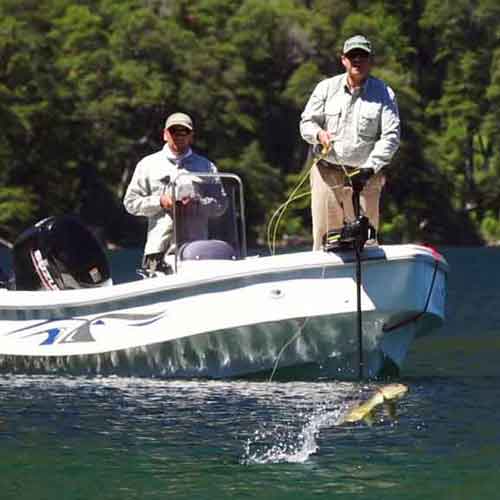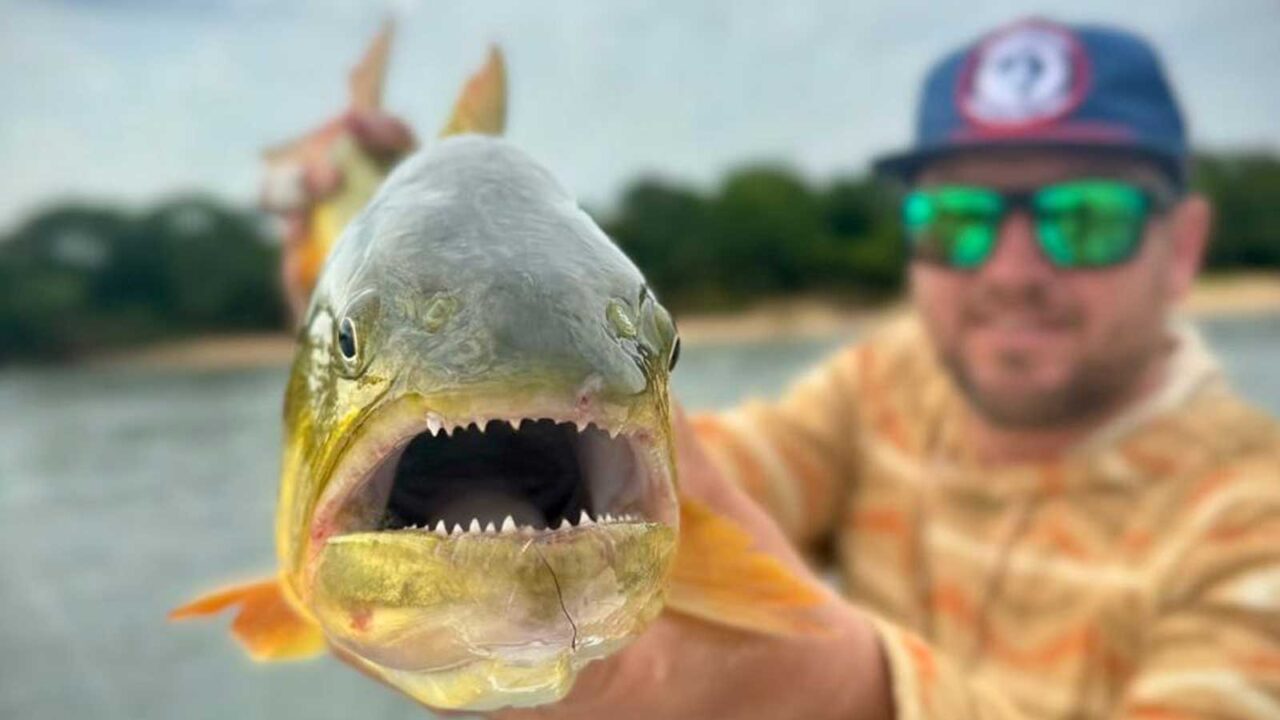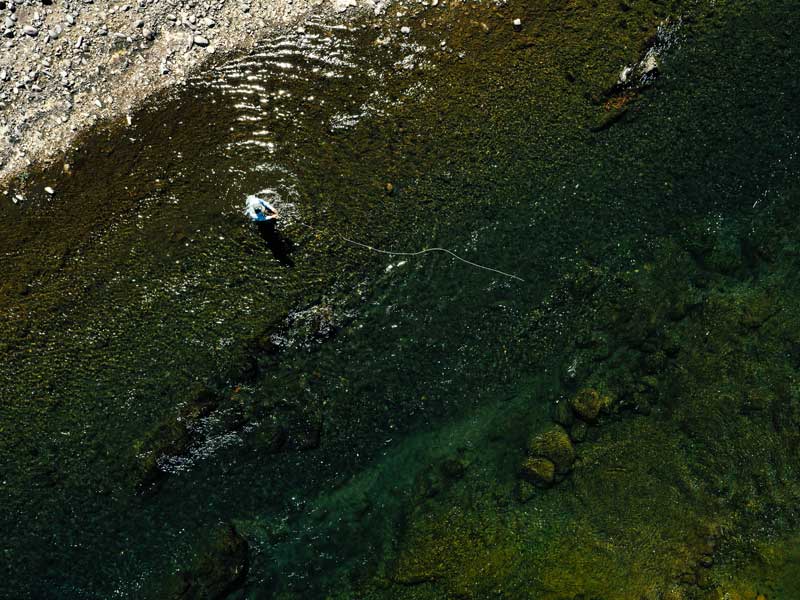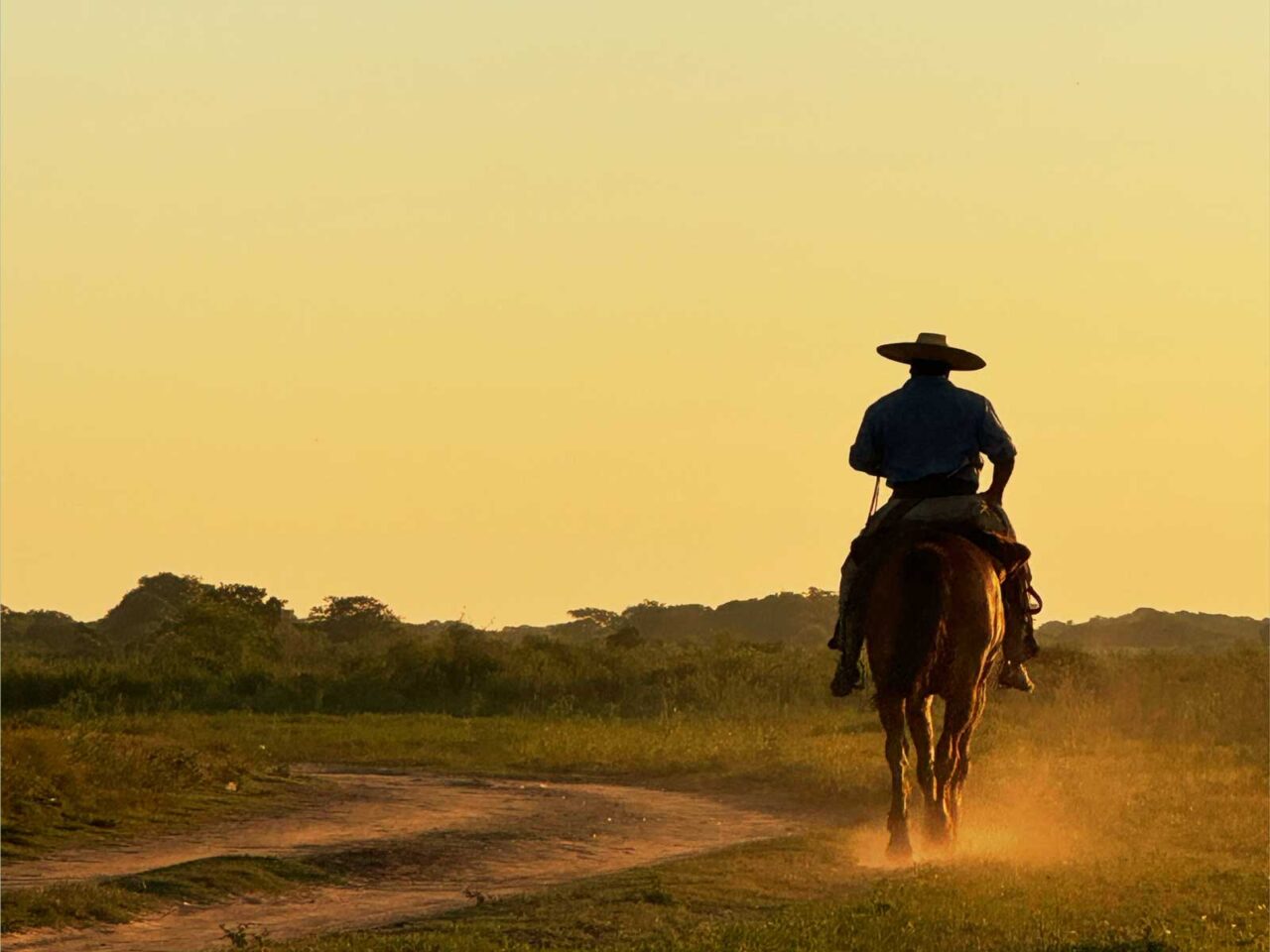Northern Patagonia holds numerous natural lakes originally created by glaciers carving out the valleys of the Andes Mountains. These are typically large but narrow bodies of water with maximum depths often exceeding 1,200 feet. These lakes are the source of water for most of the rivers we fish and float, and provide our rivers with stable and reliable flows, as these lakes are not regulated by dams.
Known as the Lake District, the region features breathtaking alpine scenery. The slopes of the mountains are covered by a cold rain forest, and the lakes are crystal clear; in many places, we can see to the bottom in more than 20 feet of depth.
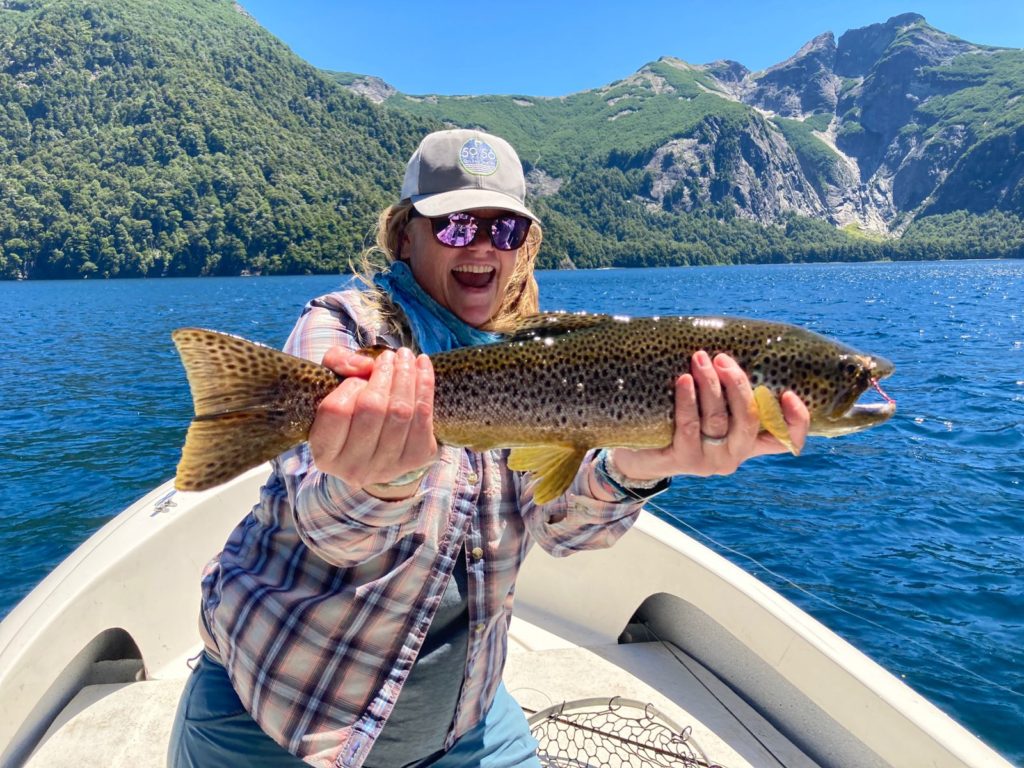
Located inside our National Parks, the lakes are home to robust populations of rainbow, brown and brook trout, and provide great opportunities to catch large fish. (The average size of the trout that inhabit the lakes is larger than the average size of the trout that live in the rivers). Many trees overhang the shorelines and much of the fishing activity occurs in the shallow waters, before the lakes drop off to deep depths. The trout are constantly cruising the shoreline to feed on terrestrials that fall from the trees and are blown into the water by the wind. This presents anglers with the special opportunity to fish with dry flies matching the terrestrials. The most effective way to fish the lakes is by prospecting deep drop-offs and casting along reed beds and rock points along the shores. Sight-fishing to cruising fish with dry flies is very exciting—you’ll never forget the sight of a large trout rising in crystal clear water to take your fly.
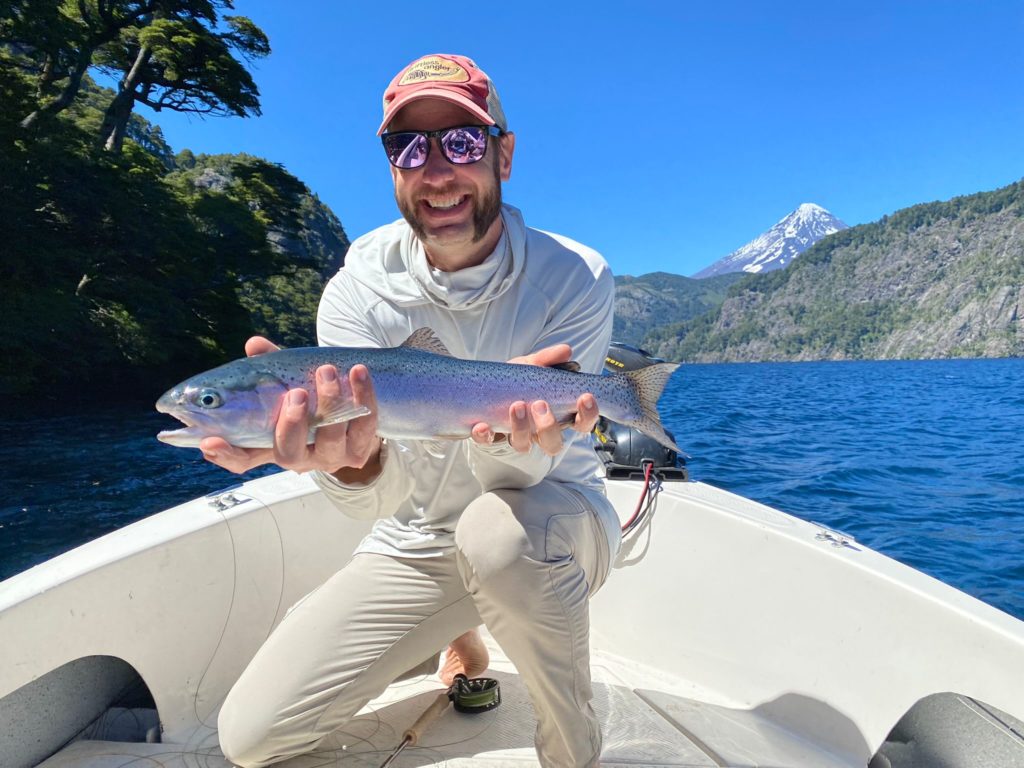
Since the insects normally don’t fly away, the trout have plenty of time to study what they will eat. For this reason, they typically feed in slow motion. A common mistake is to set the hook too early, before the trout has taken the fly all the way into its mouth. The one exception is when we see the dragonflies hatch. Since dragonflies are rich in protein and will fly away as quickly as possible, the trout race up from the depths to eat them at full speed, often jumping a couple feet into the air to catch the insects. The strikes are like no others you have ever experienced! The trout will leap completely out of the water and smash the fly on their way down, creating big splashes and boils.
During a certain time of year, adult dragonflies make up a substantial part of a trout’s diet. They are distributed along the shores of the lake, but are mostly concentrated in the shallow bays and around reeds. The nymphs are available year-round, but by the end of December, the nymphs will have hatched into winged adults that fly over the surface of the water. This is when the trout will focus on catching them.

Without wind, dragonflies are very good flyers; they will rarely touch the surface and if they do, it is for just a brief moment. When the wind picks up, it knocks the dragonflies into the water, especially when the dragonflies are feeding on smaller insects just above the surface. Dragonflies will also fall on the water during the mating process, when the female lays the fertilized eggs in the water. When this happens, the trout seize the opportunity to strike.
Skating flies on long leaders is the most effective way to trigger the fish to attack. According to our guests, the dragonfly hatch is always a highlight of the trip, because it is a unique experience to see trout take a fly so aggressively and make such acrobatic jumps. While the peak of the hatch is two weeks, the whole period extends for almost five weeks. Throughout this time, the trout will keep dragonfly adults at the top of their menu. Late spring and early summer are the best times of year to fish these lakes.

